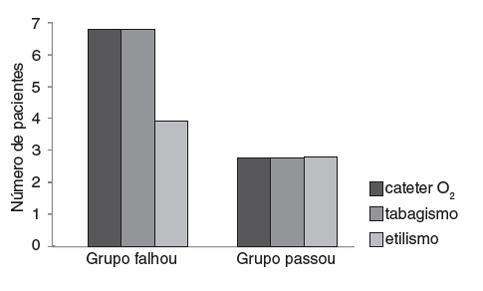Purpose:
To identify risk groups for oropharyngeal dysphagia in hospitalized patients in a university hospital.
Methods:
The study was design as an exploratory cross-sectional with quantitative data analysis. The researched population consisted of 32 patients admitted to the medical clinic at the university hospital. Patient history data were collected, followed by a universal swallowing screening which included functional feeding assessment, to observe clinical signs and symptoms of dysphagia, and assessment of nutritional status through anthropometric data and laboratory tests.
Results:
Of the total sample, the majority of patients was male over 60 years. The most common comorbidities related to patients with signs and symptoms of dysphagia were chronic obstructive pulmonary disease, systemic arterial hypertension, congestive heart failure, diabetes mellitus and acute myocardial infarction. The food consistency that showed higher presence of clinical signs of aspiration was pudding and the predominant sign was wet voice.
Conclusion:
There is a high incidence of risk for oropharyngeal dysphagia in hospitalized patients and an even higher rate of hospitalized patients with nutritional deficits or already malnourished. Hospitalized patients with respiratory diseases, chronic obstructive pulmonary disease, congestive heart failure and patients with xerostomia were indicated as risk group for oropharyngeal dysphagia.
Swallowing disorders; Malnutrition; Screening; Speech; Language and hearing sciences




